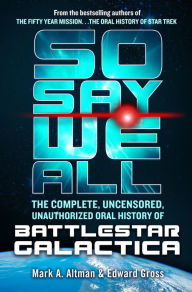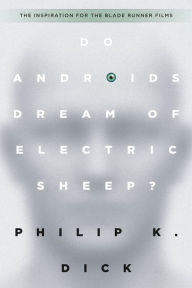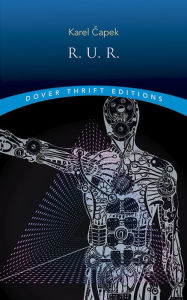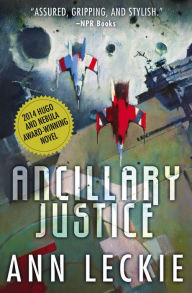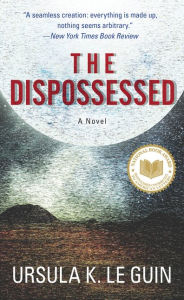So Say We All: 10 Frakking Good Books for Battlestar Galactica Fans
 There are those who believe that life here [pregnant pause] began out there. Many of those same people understand that the Cylons were created by man; that they rebelled; that they evolved; that there are many copies; and that they have a plan.
There are those who believe that life here [pregnant pause] began out there. Many of those same people understand that the Cylons were created by man; that they rebelled; that they evolved; that there are many copies; and that they have a plan.
It’s a whole thing.
Battlestar Galactica: The Remastered Collection [8 Discs] [Blu-ray]
Battlestar Galactica: The Remastered Collection [8 Discs] [Blu-ray]
Cast Lorne Greene , Richard Hatch , Dirk Benedict , Herbert Jefferson Jr. , Maren Jensen
Blu-ray $89.99
TV mega-producer Glen A. Larson developed the premise for the original Battlestar Galactica—a genuinely unique, distinctly weird blend of Greek mythology, Mormon theology, and Star Wars—throughout the 1970s, the idea only getting real traction in Hollywood in the wake of George Lucas’ game-changing hit. Produced with what was then a lavish budget for television, and with cutting-edge special effects, was a brilliantly ambitious and essential piece of ’70s sci-fi kitsch: more thoughtful than it perhaps gets credit for, but limited by the demands of TV production at the the time, and by the fact that it was cut short after only a single season (not counting the slightly ill-conceived follow-up, Galactica 1980). [Editor’s note: Slightly?]
TV mega-producer Glen A. Larson developed the premise for the original Battlestar Galactica—a genuinely unique, distinctly weird blend of Greek mythology, Mormon theology, and Star Wars—throughout the 1970s, the idea only getting real traction in Hollywood in the wake of George Lucas’ game-changing hit. Produced with what was then a lavish budget for television, and with cutting-edge special effects, was a brilliantly ambitious and essential piece of ’70s sci-fi kitsch: more thoughtful than it perhaps gets credit for, but limited by the demands of TV production at the the time, and by the fact that it was cut short after only a single season (not counting the slightly ill-conceived follow-up, Galactica 1980). [Editor’s note: Slightly?]
That might have been the end. But in 2004, writer/producer Ronald D. Moore came along, in the wake of other failed reboot attempts, and managed one of the most improbable success stories in modern television. The Sci-Fi Channel (now Syfy) reboot of a dormant ’70s property that had long since become a camp favorite had no business becoming one of the prestige TV shows of all time—a smart, thoughtful, and slickly produced hourly series that took bits and pieces from the underdeveloped original and retooled them in surprising ways.
So Say We All: The Complete, Uncensored, Unauthorized Oral History of Battlestar Galactica
So Say We All: The Complete, Uncensored, Unauthorized Oral History of Battlestar Galactica
By Edward Gross , Mark A Altman
Hardcover $29.99
A little over ten years ago, and after four seasons and 75 episodes, the series ended with an ambitious but controversial three-part finale—messy, moody, and theologically dense, the series died as it lived. In the decade since, other shows have taken up the mantle of “the next Battlestar Galactica”—the next richly textured, politically provocative sci-fi show for adults—but there’s not yet been another show quite like Battlestar Galactica.
A little over ten years ago, and after four seasons and 75 episodes, the series ended with an ambitious but controversial three-part finale—messy, moody, and theologically dense, the series died as it lived. In the decade since, other shows have taken up the mantle of “the next Battlestar Galactica”—the next richly textured, politically provocative sci-fi show for adults—but there’s not yet been another show quite like Battlestar Galactica.
But will there be one again? What are we to make of the recent news that a new version is coming, spearheaded by Mr. Robot creator Sam Esmail? Are we excited? Yes. Are we apprehensive? Also yes. This new iteration—which might be a quasi-sequel—will determine whether there’s something endlessly adaptable at the heart of the premise, and, if nothing else, it will crystalize one of the core ideas of the 2004 show: all of this has happened before, and all of this will happen again.
While we figure it all out, here are some books that capture some of that BSG vibe or explore some of the franchise’s major themes. Give them a read, start a rewatch, and celebrate the ten-year anniversary of one of the greatest pieces of science fiction ever built.
Leviathan Wakes (Expanse Series #1)
Leviathan Wakes (Expanse Series #1)
In Stock Online
Paperback
$10.70
$17.00
Leviathan Wakes, by James S. A. Corey
ThoughJames S.A. Corey’s The Expanse series (whose TV adaptation is the closest thing we have to BSG today) dodges much of the offbeat philosophy of Battlestar, the two share a thoughtfulness that dances in and around the space battles and action scenes. They also share the sense that the clock is ticking down for the human race. In Battlestar, it’s the Cylons primed to wipe us out of existence. Here, it’s the protomolecule—an infectious agent from a long-departed alien civilization that can alter biological life in dramatic ways. As that threat makes itself known, humanity struggles to move beyond age-old conflicts that have moved with us into the wider Solar System and beyond. We remain at odds with each other even as doomsday approaches. And, as in Battlestar, hope, ultimately, comes from our ability to adapt rather than from our military might.
Leviathan Wakes, by James S. A. Corey
ThoughJames S.A. Corey’s The Expanse series (whose TV adaptation is the closest thing we have to BSG today) dodges much of the offbeat philosophy of Battlestar, the two share a thoughtfulness that dances in and around the space battles and action scenes. They also share the sense that the clock is ticking down for the human race. In Battlestar, it’s the Cylons primed to wipe us out of existence. Here, it’s the protomolecule—an infectious agent from a long-departed alien civilization that can alter biological life in dramatic ways. As that threat makes itself known, humanity struggles to move beyond age-old conflicts that have moved with us into the wider Solar System and beyond. We remain at odds with each other even as doomsday approaches. And, as in Battlestar, hope, ultimately, comes from our ability to adapt rather than from our military might.
Dauntless (Lost Fleet Series #1)
Dauntless (Lost Fleet Series #1)
In Stock Online
Paperback $7.99
Dauntless: The Lost Fleet, by Jack Campbell
Jack Campbell’s long-running Lost Fleet series opens amid an interstellar war that’s been going on for well over a century. Fleet Captain John Geary awakes from an extended period of suspended animation to discover that, in his absence, he’s become a hero and legend—though the exaggerated and poorly remembered tales of his bravery have lead to some odd and counterproductive choices being made by the military leadership of the Alliance, the losing faction which has become very much a Battlestar-esque ragtag band on the run in Geary’s absence. Though the focus here is more on action, many of the same dynamics at play in the Battlestar universe are at work here.
Dauntless: The Lost Fleet, by Jack Campbell
Jack Campbell’s long-running Lost Fleet series opens amid an interstellar war that’s been going on for well over a century. Fleet Captain John Geary awakes from an extended period of suspended animation to discover that, in his absence, he’s become a hero and legend—though the exaggerated and poorly remembered tales of his bravery have lead to some odd and counterproductive choices being made by the military leadership of the Alliance, the losing faction which has become very much a Battlestar-esque ragtag band on the run in Geary’s absence. Though the focus here is more on action, many of the same dynamics at play in the Battlestar universe are at work here.
Fortune's Pawn
Fortune's Pawn
By Rachel Bach
Paperback $15.00
Fortune’s Pawn, by Rachel Bach
Though it resulted in plenty of whining from the usual quarters, one of the most impressive innovations of the 2004 Battlestar was reimagining Starbuck—the smart-mouthed, hard-drinking, cigar-smoking ace pilot from the original—as a woman (brought to hard-edged, angular, and instantly iconic life by Katee Sackhoff). She was by no means the first space-military badass to also be a woman, but she certainly shifted the bar. In that spirit, Bach’s novel (the first in a trilogy) introduces Devi Morris, an ambitious and talented mercenary who takes a security job on a ship with a reputation for trouble. Over the course of the series, she finds herself in a galactic conflict, and comes into contact with a virus that could be lethal to the “phantoms” invading our universe.
Fortune’s Pawn, by Rachel Bach
Though it resulted in plenty of whining from the usual quarters, one of the most impressive innovations of the 2004 Battlestar was reimagining Starbuck—the smart-mouthed, hard-drinking, cigar-smoking ace pilot from the original—as a woman (brought to hard-edged, angular, and instantly iconic life by Katee Sackhoff). She was by no means the first space-military badass to also be a woman, but she certainly shifted the bar. In that spirit, Bach’s novel (the first in a trilogy) introduces Devi Morris, an ambitious and talented mercenary who takes a security job on a ship with a reputation for trouble. Over the course of the series, she finds herself in a galactic conflict, and comes into contact with a virus that could be lethal to the “phantoms” invading our universe.
Do Androids Dream of Electric Sheep? (Blade Runner)
Do Androids Dream of Electric Sheep? (Blade Runner)
By
Philip K. Dick
Introduction
Roger Zelazny
In Stock Online
Paperback $16.00
Do Androids Dream of Electric Sheep?, by Philip K. Dick
One of the most influential books by one of science fiction’s most influential writers, this 1968 novel is, of course, the basis for the two Blade Runner films. Where it ties in with Battlestar, though, is in its exploration of sentience and empathy as, perhaps, qualities not entirely limited to carbon-centric humanity. As with the Cylons in the 2004 version of the show, the Nexus-6 model androids (replicants in the movies) threaten humanity by their very existence, as well as by their willingness to fight for self-determination.
Do Androids Dream of Electric Sheep?, by Philip K. Dick
One of the most influential books by one of science fiction’s most influential writers, this 1968 novel is, of course, the basis for the two Blade Runner films. Where it ties in with Battlestar, though, is in its exploration of sentience and empathy as, perhaps, qualities not entirely limited to carbon-centric humanity. As with the Cylons in the 2004 version of the show, the Nexus-6 model androids (replicants in the movies) threaten humanity by their very existence, as well as by their willingness to fight for self-determination.
R.U.R.
R.U.R.
By
Karel Capek
Translator
Nigel Playfair
,
Paul Selver
Paperback $3.00
R.U.R., by Karel Čapek
Science fiction is positively lousy with stories of revolting robots: machines that develop some level of sentience and, for good reasons or bad, decide that they’ve had quite enough of humanity thankyouverymuch. Who can’t relate? Those works, and by extension both versions of Battlestar, owe a debt to this 1920 science fiction play (aka Rossum’s Universal Robots) from Czech writer Čapek. It is among the first modern works to explore the idea of a robot uprising, and it does so in a strikingly modern way: his robots (a word he coined from a Czech word for forced labor) are biological automatons who are tasked with all our manual labor. When they inevitably rise up, it’s because they can—we’ve planted the seeds of our own destruction within their artificial minds. The author’s novel War with the Newts explores similar themes; in it, our exploitation of an aquatic species leads to a dark outcome for humanity.
R.U.R., by Karel Čapek
Science fiction is positively lousy with stories of revolting robots: machines that develop some level of sentience and, for good reasons or bad, decide that they’ve had quite enough of humanity thankyouverymuch. Who can’t relate? Those works, and by extension both versions of Battlestar, owe a debt to this 1920 science fiction play (aka Rossum’s Universal Robots) from Czech writer Čapek. It is among the first modern works to explore the idea of a robot uprising, and it does so in a strikingly modern way: his robots (a word he coined from a Czech word for forced labor) are biological automatons who are tasked with all our manual labor. When they inevitably rise up, it’s because they can—we’ve planted the seeds of our own destruction within their artificial minds. The author’s novel War with the Newts explores similar themes; in it, our exploitation of an aquatic species leads to a dark outcome for humanity.
An Unkindness of Ghosts
An Unkindness of Ghosts
By Wes Barrett
In Stock Online
Paperback $15.95
An Unkindness of Ghosts, by Rivers Solomon
A space vessel, the HSS Matilda, ferries the last remnants of humanity to a refuge—a promised land—that may or may not be entirely mythical. The social hierarchy on Solomon’s ship is set up like a antebellum southern plantation in space, with black and brown people on the lower levels and doing the hard work that keeps those on the upper decks living in comfort. Though the rather extraordinary goes in very different directions, particularly in its emphasis on Aster, a non-binary, neuroatypical lowerdecker, it does share with Battlestar the entirety of the human race as refugees, as well as the notion that leaders will manipulate hope and religion in order to motivate the masses. Thoughtful, provocative stuff.
An Unkindness of Ghosts, by Rivers Solomon
A space vessel, the HSS Matilda, ferries the last remnants of humanity to a refuge—a promised land—that may or may not be entirely mythical. The social hierarchy on Solomon’s ship is set up like a antebellum southern plantation in space, with black and brown people on the lower levels and doing the hard work that keeps those on the upper decks living in comfort. Though the rather extraordinary goes in very different directions, particularly in its emphasis on Aster, a non-binary, neuroatypical lowerdecker, it does share with Battlestar the entirety of the human race as refugees, as well as the notion that leaders will manipulate hope and religion in order to motivate the masses. Thoughtful, provocative stuff.
Children of Time
Paperback $17.99
Children of Time
In Stock Online
Paperback $17.99
Children of Time, by Adrian Tchaikovsky
The last remnants of humankind are on the run, having abandoned a dying Earth. In and out of hypersleep for centuries, the tiny handful of survivors are in search of a new Earth—a habitable world to call their own. What they discover is a world that’s been perfectly terraformed for Earth life, but it’s not unoccupied. The planet is home to a successor species, creatures genetically engineered to replace us and who, through accident and by design, are perfectly suited to the task even if they’re as alien as anything we could imagine. Just as the Cylons judge their human parents and find them wanting, so do Tchaikovsky’s creatures. One of the book’s major themes is the exploration of that contentious, possibly apocalyptic relationship.
Children of Time, by Adrian Tchaikovsky
The last remnants of humankind are on the run, having abandoned a dying Earth. In and out of hypersleep for centuries, the tiny handful of survivors are in search of a new Earth—a habitable world to call their own. What they discover is a world that’s been perfectly terraformed for Earth life, but it’s not unoccupied. The planet is home to a successor species, creatures genetically engineered to replace us and who, through accident and by design, are perfectly suited to the task even if they’re as alien as anything we could imagine. Just as the Cylons judge their human parents and find them wanting, so do Tchaikovsky’s creatures. One of the book’s major themes is the exploration of that contentious, possibly apocalyptic relationship.
Ancillary Justice
Ancillary Justice
By Ann Leckie
In Stock Online
Paperback $17.99
Ancillary Justice, by Ann Leckie
As the original and updated Battlestar shows did for science fiction television, Leckie’s mind-bending Imperial Radch trilogy takes the traditions of military space opera in entirely new directions. Though Leckie’s books eschew the gritty, grounded vibe of the 2004 Battlestar in favor of something more out there, some of the philosophical considerations are right on the mark: what rights do artificial beings (in this case: spaceships) have to self determination, and, at what point does an oppressed class (in this case: the body of a former human soldier now overwritten and controlled by an AI) have a right to revenge.
Ancillary Justice, by Ann Leckie
As the original and updated Battlestar shows did for science fiction television, Leckie’s mind-bending Imperial Radch trilogy takes the traditions of military space opera in entirely new directions. Though Leckie’s books eschew the gritty, grounded vibe of the 2004 Battlestar in favor of something more out there, some of the philosophical considerations are right on the mark: what rights do artificial beings (in this case: spaceships) have to self determination, and, at what point does an oppressed class (in this case: the body of a former human soldier now overwritten and controlled by an AI) have a right to revenge.
The Cruel Stars: A Novel
Hardcover $28.00
The Cruel Stars: A Novel
Hardcover $28.00
The Cruel Stars, by John Birmingham
The Sturm once terrorized the galaxy, intent on destroying humans who had been in any way genetically or cybernetically altered (making them sort of anti-Cylons). They killed billions before being driven off, and were believed to have disappeared forever. Which, of course, they did not: following a sneak attack, it becomes apparent that the Sturm are back. With humanity’s defenses wiped out, our only hope rests with a few individuals who might be able to turn back the assault. The plot parallels and military sci-fi vibe make it a pretty good fit for Battlestar fans.
The Cruel Stars, by John Birmingham
The Sturm once terrorized the galaxy, intent on destroying humans who had been in any way genetically or cybernetically altered (making them sort of anti-Cylons). They killed billions before being driven off, and were believed to have disappeared forever. Which, of course, they did not: following a sneak attack, it becomes apparent that the Sturm are back. With humanity’s defenses wiped out, our only hope rests with a few individuals who might be able to turn back the assault. The plot parallels and military sci-fi vibe make it a pretty good fit for Battlestar fans.
The Dispossessed (Hainish Series)
The Dispossessed (Hainish Series)
In Stock Online
Paperback $7.99
The Dispossessed, by Ursula K. Le Guin
“Panspermia” is not nearly as dirty as it sounds, instead being the scientific idea that human life evolved not from stuff that was native to Earth, but instead from microorganisms or chemicals from space. Or, put more dramatically: that life here began out there. Though Ursula K. Le Guin’s Hainish Cycle (of which The Dispossessed is a good example) and Battlestar Galactica are the oddest possible fit tonally, they share a similar theory of human origins: in Le Guin’s universe, human civilization started on Hain and spread to other worlds, including Earth, and become disconnected, evolving disparately until eventually rediscovering each other. In Battlestar mythology, life began on Kobol (or possibly Earth, depending on which version you’re watching) and spread to the twelve colonies, whose people struggle to make contact with their lost, early home.
The Dispossessed, by Ursula K. Le Guin
“Panspermia” is not nearly as dirty as it sounds, instead being the scientific idea that human life evolved not from stuff that was native to Earth, but instead from microorganisms or chemicals from space. Or, put more dramatically: that life here began out there. Though Ursula K. Le Guin’s Hainish Cycle (of which The Dispossessed is a good example) and Battlestar Galactica are the oddest possible fit tonally, they share a similar theory of human origins: in Le Guin’s universe, human civilization started on Hain and spread to other worlds, including Earth, and become disconnected, evolving disparately until eventually rediscovering each other. In Battlestar mythology, life began on Kobol (or possibly Earth, depending on which version you’re watching) and spread to the twelve colonies, whose people struggle to make contact with their lost, early home.
Only a Cylon wouldn’t love books with that Battlestar Galactica feel. What others do you recommend?
![Battlestar Galactica: The Remastered Collection [8 Discs] [Blu-ray]](https://prodimage.images-bn.com/pimages/0025192275807_p0_v2_s192x300.jpg)
